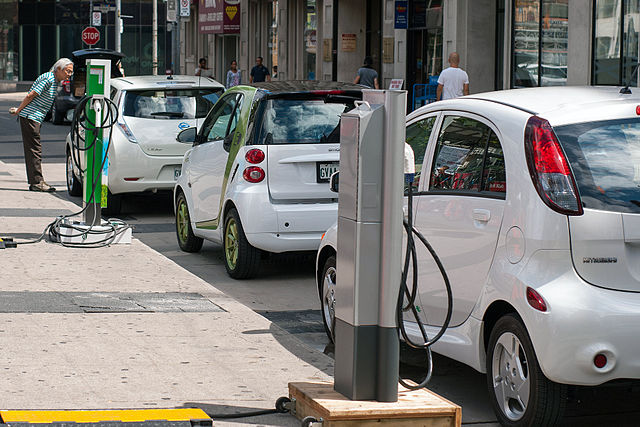Global action on hybrid and electric vehicle commitments
Governor Tim Walz recently announced a bold new "Clean Cars" plan to transition 20% of Minnesota's cars and trucks to low-emission technology by 2030, with the goal of cutting pollution and improving public health. Minnesota is helping to lead a broader shift in the industry: At the national and local levels, numerous goals, laws and incentives aim to enhance the adoption of hybrid and electric vehicles in the near future.
Likewise, many manufacturers have expressed their intentions to rapidly transition their fleets to next-generation standards. While far from comprehensive, the lists below offer a sense of the pace and scale of EV conversion worldwide, as of September 2019.
National hybrid and electric vehicle (EV) goals
- France: Prohibit the sale of all new gasoline and diesel vehicles by 2040
- Britain: Prohibit the sale of all new gasoline and diesel vehicles by 2035, with a goal of 100% zero emissions for all cars and vans by 2050
- India: 100% electric vehicle sales by 2030
- China: 20% of all new vehicle sales must by electric or hybrid by 2025
- Norway: 100% of new car sales will be EV by 2025 (current EV sales are nearly 40%)
- Denmark: Prohibit the sale of new gasoline and diesel vehicles by 2030
- United States: Vehicles purchased on or after 2010 may be eligible for a federal income tax credit of up to $7,500, with restrictions
Corporate hybrid and electric vehicle goals and models produced
Most major manufacturers have expressed their intentions to advance the deployment of EV technology in the near future. While a more comprehensive summary is available through the International Energy Agency’s 2018 Global EV Outlook, a brief summary of popular brand commitments and goals is below:
- Tesla: 100% EV
- Volvo: 100% hybrid / EV vehicle production by the end of 2019
- Toyota: Goal of 10 EV models by 2020, 1 million fully EV cars sold by 2030
- Volkswagen: Goal of 25% EV sales & 80 EV models by 2025
- Ford: Goal of 40 electrified models by 2025, $11 billion EV investment by 2022
- Renault-Nissan: 20% EV sales & 12 EV models by 2022
- General Motors: Goal of 20 EV models by 2023
- Hyundai-Kia: 12 EV models by 2020
- Honda: 15% EV sales by 2030
U.S. state hybrid and eclectic vehicle incentives
In addition to the good news from the Walz Administration, other states are taking action. A lengthy list of existing state hybrid and eclectic vehicle incentives and standards is available through the National Conference of State Legislatures.
Municipal designations
A number of cities and local jurisdictions include internal combustion engine access or sales restrictions, diesel access restrictions or “fossil-fuel-free streets” declarations. A brief summary, via the International Energy Agency’s 2018 Global EV Outlook, includes cities such as Athens, Barcelona, Cape Town, London, Los Angeles, Madrid, Mexico City, Milan, Rome, Seattle, Stockholm and Vancouver.
What does this mean for the river?
The electric vehicle transition has huge implications for American farms (not to mention opportunities for water quality). Demand for corn-based ethanol (the largest use of our corn crop) will eventually plummet, and the agricultural economy will be nothing like the one we know today. If we invest in innovative clean-water crops now, we can improve the long-term outlook for our state’s rural economic prosperity and for our river. Find out more about the transition.
Join us!
Sign up as a River Guardian and we'll email you when there's a chance to act quickly online for the river. Plus you'll be invited to special events like educational happy hours.
